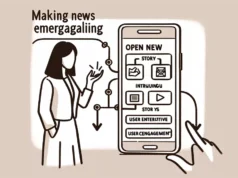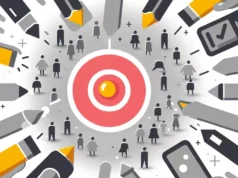Digital Media Continues to Challenge the Existence of Print
Ever since the inception of the Internet, the world of information dissemination, specifically in the form of news, changed radically. Traditional print media, which enjoyed an uninterrupted reign for several centuries, is now faced with a formidable competitor – digital media. With physical newspapers and magazines witnessing a gradual decline in their circulation and revenues, digital media’s ascendancy underscores the changing dynamics of the journalism industry and audience alike. Spanning everything from online news publications, e-books, web-based streaming platforms, and social media, digital media’s encroachment upon the once sacred sphere of print seems unabated.
The widespread availability of Internet services, the global proliferation of mobile devices, and a growth surge in social media usage are key catalysts propelling the shift from print to digital. Media research surveys suggest about two-thirds of Americans derive their news from social media, signifying the enormous shift from the time when the morning newspaper sip with coffee was North America’s universal ritual.
While traditionalists lament the diminishing prominence of print, champions for digital media argue that the medium offers myriad benefits not witnessed in print. Digitalizing content ensures faster distribution, lower production costs, wider reach, interactivity, adaptability, and instant updates. Moreover, digital media offers an ecological edge, reducing the consumption of paper, thus contributing to environmental sustainability.
From a revenue perspective, print’s dwindling stature continues. PricewaterhouseCoopers (PwC), in its Global Entertainment and Media Outlook 2020-2024 report, projected that global newspaper circulation revenue would drop from $64 billion in 2019 to $61 billion in 2024. Conversely, the same report predicted the digital newspaper revenue to rise from $26 billion in 2019 to $32 billion in 2024. This perfectly underlines how revenue lines are transitioning in favor of digitalization.
Digital media also comes with a robust tool of metrics, offering insights into consumer behavior and content performance. Such instant feedback mechanisms enable content creators and publishers to alter strategies and focus on consumer interests, facilitating the development of a more engaging community. Print, with its limited ability to impart such data, invariably falls short.
However, this transformation doesn’t come without its setbacks. The inundation of digital information has led to a rise in misinformation, fake news, and sensationalism. Furthermore, advertisers’ control over the news, unprecedented layoffs, and the death of local news are worrying side effects that digital media’s imposition has spawned.
The quandary on privacy poses another challenge. While print affords the anonymity of readership, digital media’s data dependence translates to privacy threats and potential misuse. The controversy surrounding Cambridge Analytica’s use of Facebook data during the 2016 United States Presidential Elections delineates the fear associated with website data mining and the subsequent manipulation of user information.
The fierce collision between print and digital media presents an interesting paradox. On the one hand, the exodus toward digital media continues. On the other, a loyal base of print enthusiasts who cherish the tactile, immersive experience of flipping through printed pages persists. So, while print might not completely vanish, its form and function will undoubtedly continue to evolve, presenting opportunities for creative overlap between the physical and the virtual.
Going forward, traditional print outlets need to design an optimal operational mix of print and digital. Some publishers are already integrating QR codes, augmented reality, and e-ink technology to evolve the print experience. Emphasizing investigative journalism, offering exclusive, in-depth content, and harboring a niche audience can prove beneficial routes for print media’s survival.
The digital wrangle over the old-world charm of print is reminiscent of a David versus Goliath battle. But can David survive the ruthless onslaught, or will the old giant gracefully give way to the new titan? It’s a compelling narrative that will continue to unfold in the years to come.
Sources:
1. Pew Research Center, News Use Across Social Media Platforms 2020
2. PwC’s Global Entertainment and Media Outlook 2020-2024
3. Facebook-Cambridge Analytica data scandal, BBC News, 2018
4. Newspaper Declines Accelerate, Latest Pew Research Finds, Mark Jurkowitz, Rick Edmonds, 2020.






